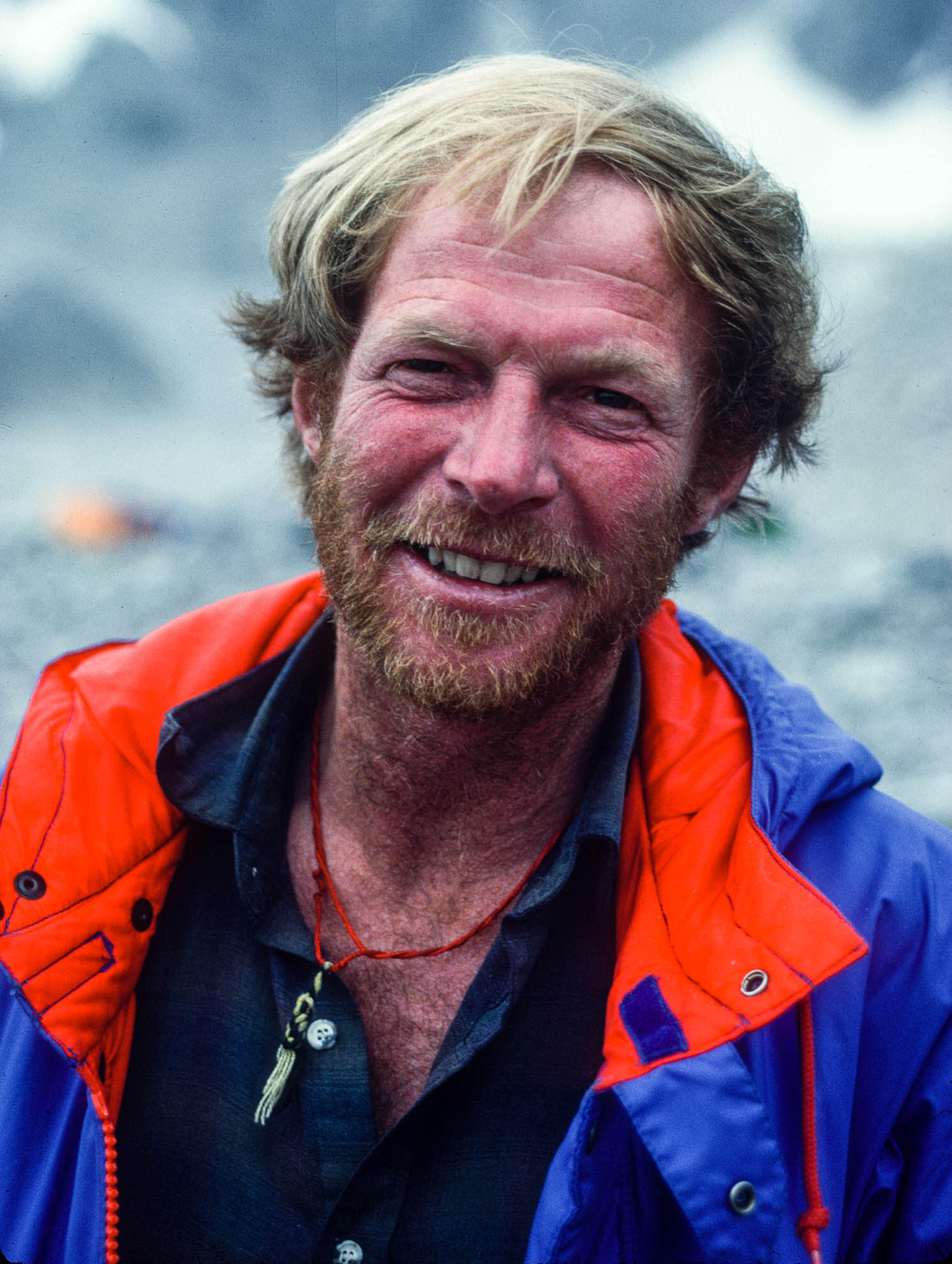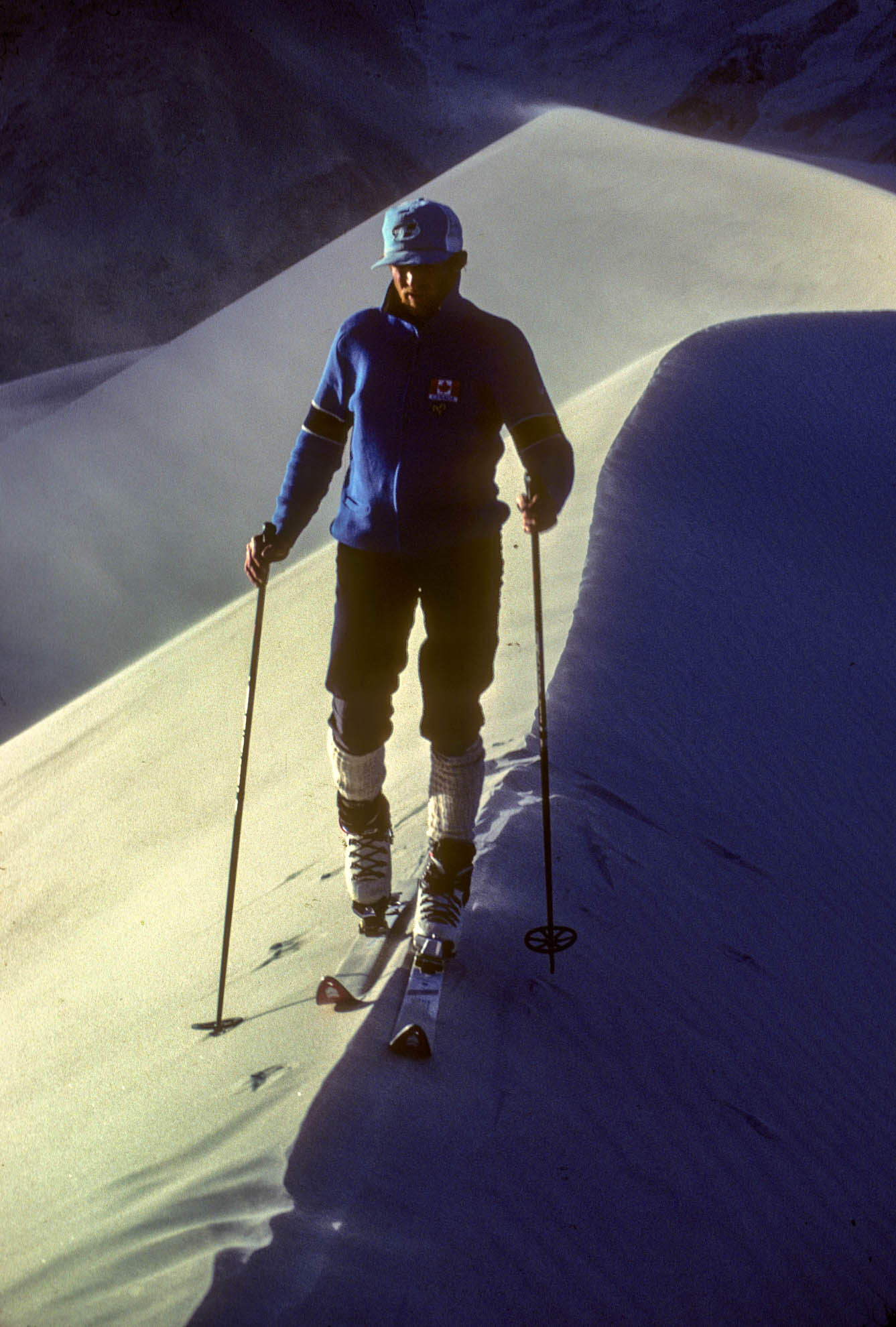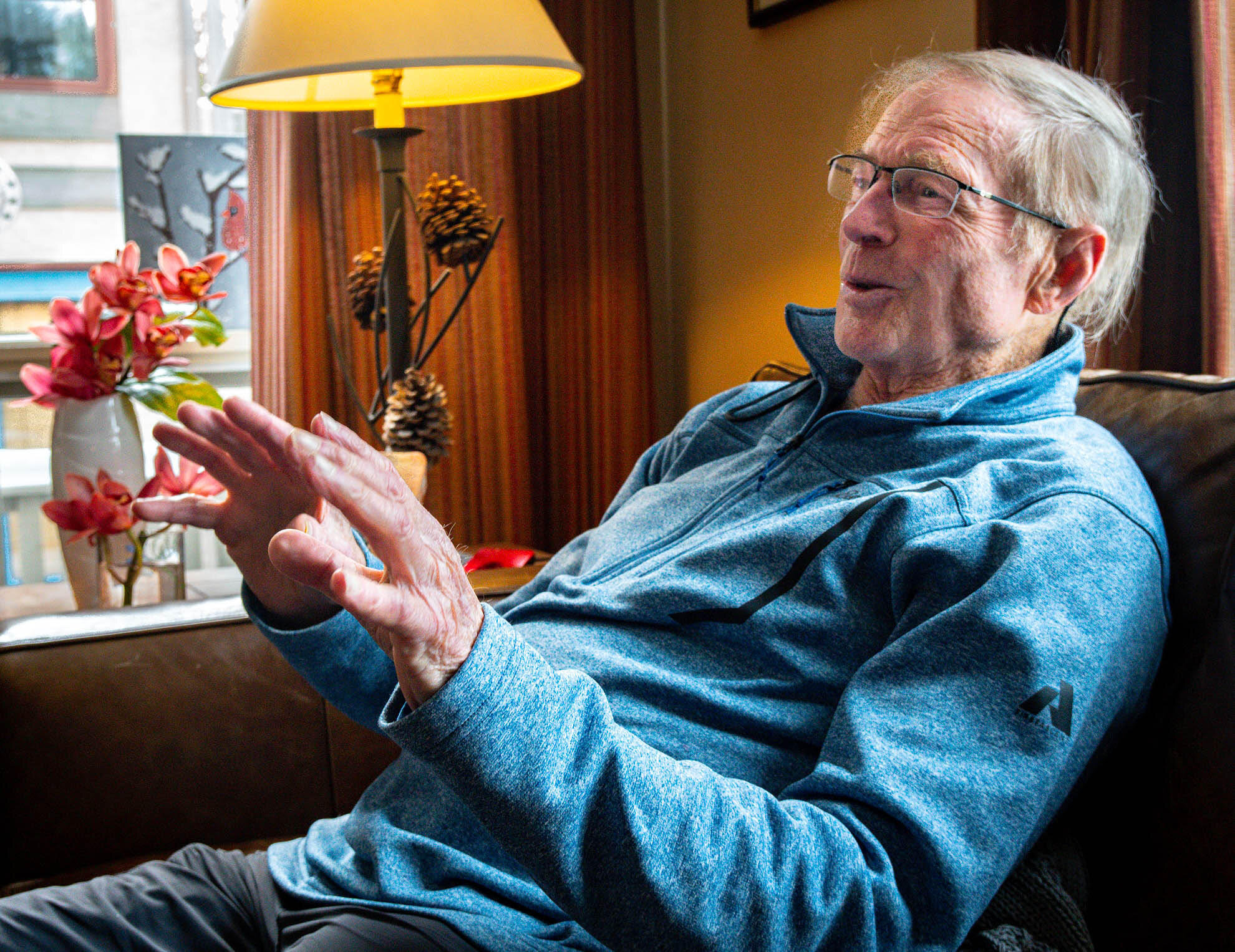THREE THINGS I’VE LEARNED: LLOYD “KIWI” GALLAGHER
Written by Lynn Martel • Photos by Pat Morrow
Mountains make the greatest teachers and provide us with countless opportunities to contemplate, question and learn. As a climber, member of Canada’s 1982 expedition to Mt. Everest, ACMG/IFMGA guide, Summit of Excellence Award winner, and beloved member of the Rockies community, Lloyd “Kiwi” Gallagher has had many such moments. Turning 80 this year, Kiwi shares what he’s learned throughout his many decades spent in the mountains.
First Canadian expedition to Mt. Everest, Nepal, 1982. Lloyd Gallagher, deputy leader, at basecamp. Photo by Pat Morrow.
You’d never guess it today, watching him schuss so smoothly down the slopes, but when Lloyd “Kiwi” Gallagher scored a job as a general handyman with Hans Gmoser’s brand new heli-skiing company in the mid-1960s, he spent his days tail-guiding the groups and crashing his way down the mountainside.
Having grown up in New Zealand, Gallagher was a competent 25-year-old mountaineer when he arrived in Canada via a one-way ticket aboard a freighter. He couldn’t afford a return ticket. His passion for climbing was inspired by the book Annapurna, written by French climber Maurice Herzog (who was a member of the first team to summit an 8,000-metre peak), and also by his fellow Kiwi countryman, Edmund Hillary, and his landmark ascent of Everest in 1953.
Loyd Gallagher (L) and Hans Gmoser (R), Cariboos. Photo by Pat Morrow.
Lloyd Gallagher plays with Kirghiz kid, Muztagata ’81. Photo by Pat Morrow.
Eventually, Gallagher’s skiing skills improved enough that he earned his international certification as an ACMG/IFMGA mountain guide. And it was his ethic of working hard and doing whatever was necessary to get the job done that led Gmoser to hire Gallagher to run the construction of his company’s second lodge in the Cariboos near Valemount, B.C. Opening in 1974, Gallagher was manager and chief guide at CMH’s Cariboo Lodge for the next four years.
As their two boys reached school age, Gallagher and his wife Fran thought it was time for a change, so the young family moved to Canmore in 1978. This was shortly after the creation of Alberta’s 4,000-square-kilometre Kananaskis Country recreation area, and Gallagher took on the role of emergency services coordinator for the new park. For the following 18 years – which included Nakiska ski hill hosting the downhill ski races, and the Canmore Nordic Centre hosting the cross-country events of the 1988 Winter Olympics – Gallagher participated in more than 500 rescue missions and helped train a world-class public safety team that carries on that legacy today.
A man of boundless energy, over the years Gallagher contributed his mountain skills and leadership talents to numerous projects. His adventures took him to work for six months managing a research camp on the Greenlandic icecap 644 kilometres north of Thule, and to the Yukon and the Mount Logan high camp guiding and guarding the safety of parties carrying out glacier and topographic research.
In 1968, as a part of a New Zealand Alpine Club expedition, he climbed a new route on Peru’s Yerupaja, and made the first traverse of 6,632-metre Yerupaja Grande, then followed up with a descent of the Amazon River by balsa raft. In addition to climbing Nepal’s Pumori (7145 metres), and Canada’s highest peak, 5,959-metre Mount Logan, in 1981 Gallagher skied up and down Mount Muztagata, a 7,546-metre peak in the Pamir mountains of Xinjiang province.
The following year, Gallagher served as deputy leader of the 1982 Canadian Mount Everest Expedition. There he climbed as high as the South Col on a challenging expedition that suffered the deaths of three Sherpa team members, who were buried by a massive avalanche while carrying loads through the icefall, and CBC cameraman Blair Griffiths, who died in an icefall collapse. While the tragedy led some of the team members to return home, Gallagher was among those who made the decision to stay, which ultimately resulted in the first two Canadians, Laurie Skreslet and, two days later, Pat Morrow, reaching Everest’s summit, each accompanied by two Sherpas.
“Many expeditions go out all the time and nothing happens, but then, when you’re in the wrong place at the wrong time and something does, it teaches you so quickly you can lose your life on a mountain like that,” Gallagher said. “You realize there’s a lot more things in life you can do.”
For all that he has done, Gallagher has been recognized. In 1999 the Government of Canada awarded him the National Search and Rescue Secretariat’s Outstanding Achievement Award for Search and Rescue in Canada. In 1994, Gallagher was honoured as the recipient of the Summit of Excellence Award, presented annually at the Banff Centre Mountain Film Festival. In 2007, the Association of Canadian Mountain Guides made him an Honorary Member.
“That was a very special moment,” Gallagher said. “Ever since I passed my guide’s course in 1966, when you think of all those years gone by, and you think of all the pleasure I’ve had from guiding and enjoying the mountains with a lot of wonderful people, it’s really thanks to Hans Gmoser for giving me the opportunity to move forward in the guiding profession.”
Along with that, very quietly Gallagher has been a long-time supporter and contributor to Mountain Haven, a YMCA program that provides a weekend retreat to assist women and children living in second-stage women’s shelters throughout Alberta.
Turning 80 this year, and despite suffering a stroke last year, Gallagher has been out all winter skiing the slopes of Sunshine Village, smoothly and with great skill and style. Spending a lifetime in the mountains, he says, taught him many lessons that carried him well through all aspects of his life.
KIWI GALLAGHER:
THREE THINGS I’VE LEARNED
1/ Always be willing to work hard and be willing and keen to improve your skills. There is always more you can learn.
2/ Take the time and effort to plan well before any endeavour and keep safety as a constant thought during every outdoor experience, whether personal adventure or professional guiding or rescue exercise.
3/ Celebrate your imagination and nurture your determination to get outside and enjoy the mountains every day you are able.
Author of two books of adventure and ten mountain biographies, Lynn Martel explores the Canadian Rockies backcountry by skis, boots, camera and the written word.








